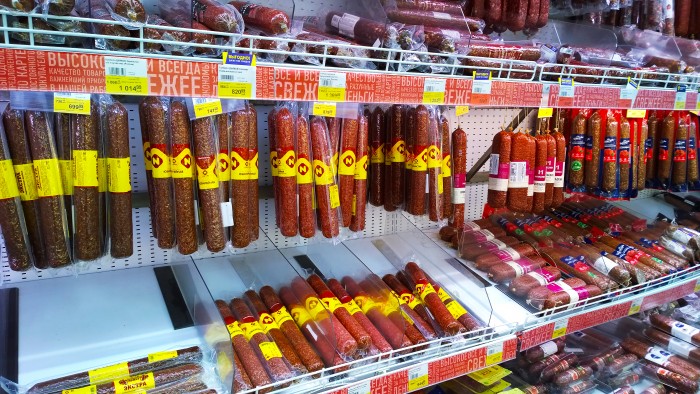Moscow-based multimedia freelance journalist, Vladislav Vorotnikov tells Pig World Magazine how Russia is set to become one of the world’s largest pork exporters, despite a record-breaking ASF toll.
At the end of 2020, Russia had to cull nearly 500,000 pigs due to several massive outbreaks of African swine fever (ASF) – the highest figure for several years.
But this temporary setback has not even slightly derailed the country’s pig industry, which keeps expanding at a fast pace on the back of booming exports. In 2021, Russian pork exports are expected to climb to 250,000 tonnes, possibly 300,000t, if direct supplies to China are allowed, the Russian state-owned bank Rosselhozbank forecasts. Last year, the country exported 192,000t, almost twice the level of 2019.
Russia has become the world’s fifth-largest pork producer, overtaking Brazil, according to another Russian state-owned bank Gazprombank. In 2020, the Russian pork production totalled 4.3 million t, the Russian Union of Pork Producers (RUPP) estimated. This is far from the ceiling, and the production level is forecast to jump to 6mt in 2025, RUPP said.
To some extent, the growth is driven by rising domestic consumption. In 2020, it reached 28kg/capita – the highest figure since Soviet times. This is still below the level of some European countries, and in 2021, RUPP anticipates a further 3% increase in domestic demand.
However, domestic demand is unlikely to show a rapid growth from 4.08m t achieved in 2020, which means Russian pork producers are primarily betting on exports. If all investment plans in the Russian pork industry go down smoothly, the country would need to export at least 1 m t of pork by 2025 to avoid an acute oversupply crisis on the domestic market.
In 2020, the biggest sales markets for Russian pork were to Vietnam and Hong Kong. South-East Asia countries are likely to remain the most attractive sales destinations for Russian pork producers in the coming years, Rosselhozbank predicts.
The COVID-19 pandemic has not disrupted the Russian pig industry’s operations – on the contrary, some increases in retail prices have pushed the average profitability ratio up to 18% in 2020. The Russian ruble’s depreciation provoked by the pandemic has made Russian pork more competitive on the global market.
As of early May, Russia has registered 36 outbreaks of ASF, of which 17 were among farmed pigs. The virus continues dwelling not only in the European part of Russia, but also in the Far East. Meanwhile, cases of ASF-contaminated products entering the food chain keep occurring.
Some market participants have claimed that veterinary officials are opting to turn a blind eye to these cases, since ASF poses no threat to humans. In 2020, the Russian veterinary watchdog Rosselhoznadzor considered raising fines for selling pork contaminated with ASF, which are understood to be not comparable with the potential profit farmers may obtain from selling contaminated meat. However, a decision on this issue is still pending.
Belarus keeps up, Ukraine hopes for improvements
Belarus’ pig industry is set for a gradual modernization, and capacities expansion, in accordance with the Industry Development Program recently published by the Belarus Academy of Science.
The pig population is expected to grow from 3.17m head in 2020 to 3.5m in 2025 and 3.6m in 2030, growth expected to be accompanied by some productivity improvements, as the daily gain is forecasted to rise from 620g in 2020 to 650g in 2025 and 720g in 2030.
As a result, domestic pork production is likely to grow from 620,000t in 2020 to 690,000t in 2025 and 720,000t in 2030.
A weird situation around ASF is constraining the prospects of pork production growth in Belarus, however. The country has not reported a single outbreak for more than five years, including in wildlife, despite neighboring countries regularly finding infected wild boars crossing the border from the Belarussian side, while local independent news outlets from time to time have reported on ‘a strange disease killing pigs in the villages’.
Things look worse in neighbor Ukraine. Pig farmers had hoped that the production decline caused by ASF, among other things, would stop in 2021.
But as of early 2021, the country’s pig population totalled 5.84m, among the lowest levels of the past few decades. High costs have caused a new crisis in the industry, which not every company will be able to endure, the Ukraine Pig Farmers Association forecasted.




